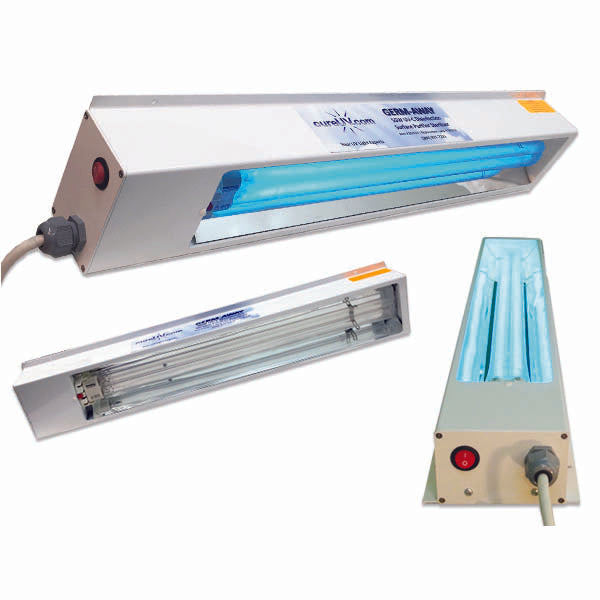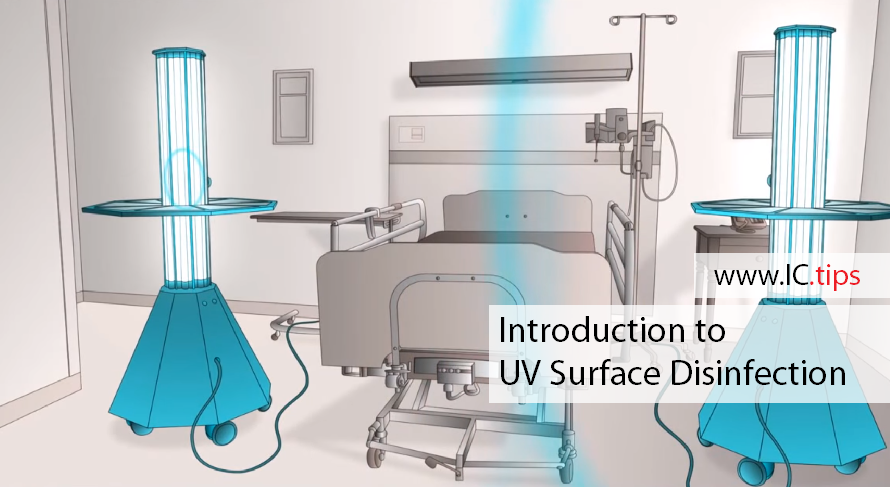Future-Proofing Your Area: Integrating UV Surface Disinfection for Ongoing Defense
Wiki Article
Discovering UV Disinfection: An Essential Device in the Battle Versus Hazardous Virus
As the world faces an ever-increasing danger from damaging pathogens, the search for reliable approaches of sanitation has actually come to be an urgent concern. One such approach that has gathered significant focus is UV disinfection. In this conversation, we will delve right into the world of UV disinfection, discovering its potential as a necessary tool in the fight against damaging microorganisms.Just How Does UV Sanitation Work?
UV sanitation functions by utilizing ultraviolet (UV) light to get rid of hazardous virus and prevent their spread. This extremely efficient approach includes using UV radiation to interrupt the DNA and RNA of microbes, making them not able to duplicate and creating their utmost destruction.When UV light is made use of for disinfection, it is usually discharged from a lamp or light bulb that creates a particular wavelength of UV-C light. uv surface disinfection. This wavelength, varying from 200 to 280 nanometers, is especially effective at permeating the outer cell wall surface of microorganisms, viruses, and various other microbes. As soon as inside the cell, the UV radiation targets and damages the genetic material, protecting against the bacterium from creating and duplicating infection
UV disinfection systems are made to emit the ideal intensity and duration of UV light to make certain reliable pathogen removal. The dose of UV light required for disinfection depends on elements such as the sort of bacterium, its resistance to UV radiation, and the particular application. Furthermore, the system has to be carefully engineered to make sure proper direct exposure of the target virus and to avoid any kind of prospective harm to humans or the environment.
The Advantages of UV Disinfection
UV disinfection provides a multitude of advantages in effectively eliminating hazardous virus and decreasing the threat of infection. Among the main benefits of UV sanitation is its capacity to supply a chemical-free and eco-friendly service. Unlike traditional disinfection methods that rely upon chemicals, UV disinfection makes use of ultraviolet light to ruin the DNA and RNA of bacteria, making them incapable to reproduce and trigger infections. This chemical-free approach makes sure that no harmful residues are left behind, getting rid of any possible wellness risks connected with chemical disinfectants.One more considerable advantage of UV disinfection is its efficiency in killing a vast array of virus. UV light has been verified to effectively get rid of bacteria, viruses, fungi, and protozoa, including those that are immune to standard anti-bacterials. This broad-spectrum efficiency makes UV sanitation a flexible tool in numerous setups, such as healthcare facilities, water treatment plants, and food processing industries.
In enhancement to its efficiency, UV sanitation also supplies fast disinfection cycles. Unlike other approaches that call for extensive get in touch with times or repeated applications, UV sanitation can attain substantial virus reduction immediately. This quick and effective process permits enhanced productivity, decreased downtime, and boosted total functional effectiveness.
Moreover, UV sanitation is a non-contact technique, which indicates that it does not require straight physical call with the objects or surface areas being decontaminated. This attribute makes it ideal for usage on delicate equipment and sensitive products that might be damaged or influenced by other sanitation methods.
Applications of UV Disinfection in Health Care

UV disinfection is also utilized in the sterilization of medical tools and tools (uv surface disinfection). The high intensity of UV light can effectively kill bacteria, viruses, and various other microbes, ensuring that medical devices are secure and cost-free from pollutants. Furthermore, UV sanitation is made use of in water treatment systems within healthcare centers. UV light is capable of inactivating harmful germs, infections, and parasites, making the water safe for usage and decreasing the danger of waterborne infections.
Moreover, UV sanitation technology is utilized in the disinfection of medical care uniforms and individual visit their website protective equipment (PPE) By using UV light, health care specialists can make sure that their attires and PPE are totally free from virus, protecting against the transmission of infections between patients and health care workers.
UV Disinfection in Public Spaces
Public spaces are significantly carrying out UV disinfection innovation as a crucial action to battle the spread of damaging microorganisms. With the recurring global pandemic and the continuous danger of contagious conditions, the demand for effective sanitation techniques in public areas has ended up being vital. UV disinfection offers a reliable and reliable solution hereof.
UV sanitation systems utilize ultraviolet light to deactivate the DNA and RNA of germs, infections, and other pathogens. The usage of UV sanitation modern technology in public rooms not just aids in minimizing the threat of infection but additionally instills self-confidence amongst the public concerning their safety.
As public rooms remain to adapt to the difficulties posed by contagious illness, UV sanitation modern technology plays an important role in ensuring a clean and secure setting. By executing such actions, public spaces can effectively reduce the spread of damaging microorganisms and contribute to the general wellness of the area.
The Future of UV Sanitation Technology
As the need for boosted sanitation methods continues to expand in feedback to the continuous international pandemic and the continuous risk of infectious illness, the future of UV sanitation innovation holds promising improvements in guaranteeing even a lot more effective and effective pathogen removal in different setups.
One location of advancement is the advancement of more mobile and portable UV disinfection tools. Additionally, improvements in automation and robotics are being explored to enhance the performance and effectiveness of UV disinfection processes.
One more area of expedition is using UV disinfection in air filtration systems. By integrating UV-C lights into cooling and heating systems, airborne microorganisms can be properly neutralized, lowering the threat of transmission in indoor atmospheres.
Moreover, researchers are examining using UV sanitation in food processing facilities to make certain the safety and high quality of foodstuff. UV-C light has been discovered to be reliable in eliminating foodborne microorganisms, supplying a chemical-free alternative to conventional sanitation approaches.
Conclusion
In final thought, UV sanitation is an important tool in the battle versus hazardous microorganisms. Its performance in eliminating bacteria, viruses, and various other microbes makes it a useful modern technology in healthcare settings and public rooms. With its capacity to provide a chemical-free and ecologically pleasant approach of disinfection, UV technology holds wonderful potential for the future. Its extensive application can contribute to the prevention of infections and the enhancement of public health and wellness.UV disinfection systems are developed to release the ideal strength and period of UV light to make sure effective pathogen removal. The dosage of UV light required for sanitation depends on variables such as the kind of microorganism, its resistance to UV radiation, and the specific application. Unlike standard sanitation techniques that rely on chemicals, UV sanitation uses ultraviolet light to destroy the DNA and RNA of microorganisms, rendering them incapable to replicate and cause infections.In enhancement to its effectiveness, UV disinfection additionally provides rapid sanitation cycles. One of the main applications of UV sanitation in medical care is in the sanitation of client areas and operating theaters.
Report this wiki page